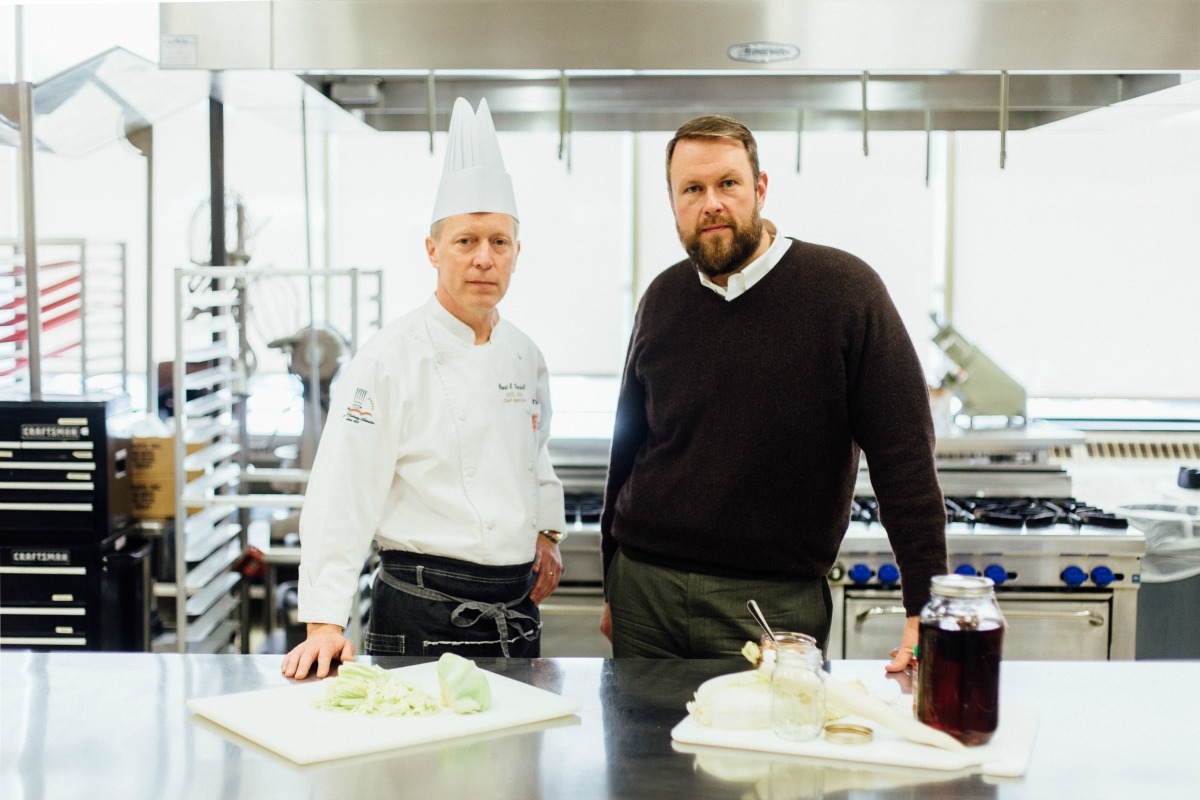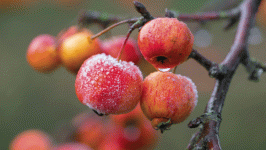How SUNY Cobleskill Is Fermenting the New Economy
What if there were a fascinating industry spanning food, beverage and the environment, one that contributes multibillions of dollars to the economy, and it was desperately in need of skilled professionals, but there were no qualified candidates to fill those jobs?
Just such a crisis is looming in the art and science of fermentation.
The process of fermentation, while integral to the process of creating food and beverage products from kimchi to coffee (yup!), is also required in the manufacturing of plastics, pharmaceuticals, nylon, penicillin and a host of sustainable environmental applications, including the nascent field of converting hydrogen gas into an alternative fuel.
Who knew tights and penicillin were fermented—and who knows how to do it? Not many peo- ple, and that’s part of the problem.
“Most people are familiar with beer, wine and fermented foods,” says Neil Law, professor of natu- ral sciences and mathematics at SUNY Cobleskill. “But fermentation encompasses so much more than that. From conversations with other professors when I began teaching at SUNY three years ago, it became clear that the field of fermentation was growing astronomically, but there just weren’t enough skilled professionals to fill essential roles in the industry.”
In 2013, Dr. Law and a team of other professors and deans started working on a plan to make SUNY Cobleskill one of the first colleges in the country to offer, respectively, Bachelor of Technology and Bachelor of Science degrees in applied fermentation and fermentation science. (Oregon State, Colorado State and Appalachian State also offer four-year fermentation degrees).
At the Governor’s Beer, Spirits and Cider Summit, which was held in October of 2015, both the governor’s office and members of the industry un- derlined the need for a more knowledgeable pool of candidates from which to draw.
“There was a definite tone from the organizers and the participants that there was a skills gap,” Dr. Law explains. “The craft beer industry alone is booming in New York, and they need real scientists who can analyze samples, give advice on how to ensure their product is safe and work on developing new lines of product.”
Just take a glance at the local, artisanal food movement. You can’t throw a Mason jar these days without hitting someone who has a sauerkraut or homebrew experiment bubbling on a shelf somewhere in his or her house. But there’s a big difference between making a delish dilly daikon radish pickle and having the know-how to safely make it for public consumption.
“The local food movement is more vibrant than ever, but it hasn’t translated to financial success for many of the people who have tried to get into the field,” says Jason Evans, associate professor of agricultural business management at SUNY Cobleskill and a key figure in creating the fermentation degree program at SUNY. “To become a successful entrepreneur or work for an established food or beverage company, you really need a background grounded in science, and some knowledge of business and marketing. We want to give students complete confidence in their knowledge base, so they can go forth and be wildly creative and safely push the limits of their field.”
I drove out to the bucolic 902-acre SUNY Cobleskill campus to learn more, and through a tour of the grounds and casual chats with a number of professors, I discovered that the school’s trademark commitment to “real life, real learning” was infused with a sense of joy, hope and discovery that is all too rare in educational institutions.
In fact, it was next to impossible to not get distracted and overstay my allotted time. There was so much to see: the cold- and warm-water fish hatchery, state-of-the-art culinary arts teaching kitchens, a student-run restaurant, art gallery, various specialty labs, greenhouses, the still-under-construction dairy processing facility, a 200-cow herd.
The campus, peppered with lounge-y public gathering spaces, paved walkways, stone seating paths, is analogous to the school’s larger mission: It encourages visitors to explore and piques their curiosity.
“Everything we do here has been designed to give students the fundamentals they will need to contribute to their field of interests,” Dr. Evans says. “Even with something as seemingly straightforward as fermentation in beer brewing, if you don’t know how and why a reaction occurs, there’s no way to accurately control and shape that reaction in the future.”
The program will officially launch in the fall of 2017. Within the program, there are three main fields. First is food and beverage, including craft beer which had a total impact of $3.5 billion in New York State between 2013 and 2014. The second focus is biocatalysis, which covers everything from medical applications to biodegradable plastic silverware and materials for the manufacturing of carpet fiber.
The last piece of the puzzle is the environmental field, where fermentation is used to process wastewater and facilitate dangerous cleanup projects. The process also converts corn into ethanol. It’s next to impossible to quantify this field, as it is the most open-ended and new, with many exciting avenues of research and inquiry being opened up, including fermenting algae in order to create biofuel, Dr. Law explains.
All three fields have the same basis in organic chemistry and biol- ogy, and all involve hands-on internships, training and a grounding in business and marketing.
Food science and related industries are projected to grow by up to 40% by 2022 in New York, according to the state’s Department of Labor. Due to our robust beer, wine and yogurt industries, the state is outpacing the projected national growth by 16% to 20%.
In an economy in which so many young people struggle to find a way to fuel their creative, entrepreneurial zeal with the demands for money that rent, insurance and beer place on their wallets, and when parents wring their hands on the sidelines, hoping their children will “study something practical,” SUNY Cobleskill’s new fermentation programs, with their emphasis on creativity and science, seem to offer a solution to that age-old conundrum.
Emotional and intellectual fulfillment, with a side of steady paycheck. Maybe real life isn’t so bad after all.







